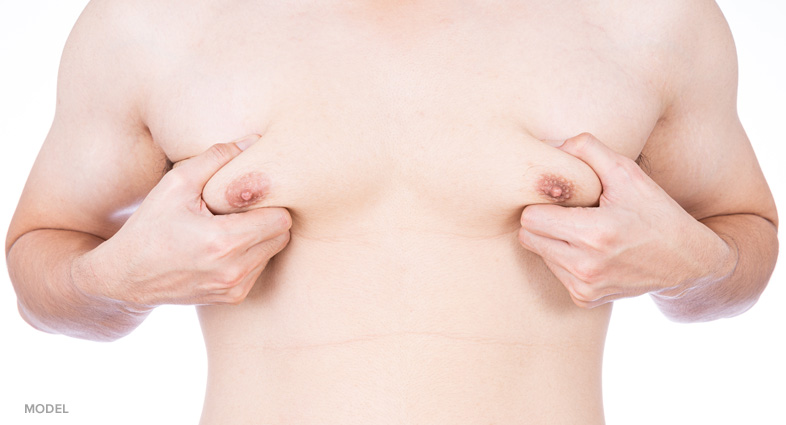Excess chest fat can be a source of embarrassment and self-consciousness for men, and it can be challenging to distinguish between gynecomastia and chest fat. To determine the best course of action, it’s important to understand the difference between these two conditions. Gynecomastia is the development of glandular breast tissue in men, while chest fat is an accumulation of excess fat in the chest area. Both conditions can cause men to feel self-conscious and affect their confidence. Therefore, it’s crucial to seek medical advice to determine the underlying cause and the most suitable treatment options.
What is the Difference Between Gynecomastia and Chest Fat?
Gynecomastia
Gynecomastia is a condition that causes the enlargement of male breast tissue. This condition is caused by an imbalance of hormones in the body. The hormones estrogen and testosterone are responsible for controlling the growth and development of breast tissue. When there is an excess of estrogen in the body, it can cause the development of glandular breast tissue in men, leading to gynecomastia.
Chest Fat
Chest fat, on the other hand, is an accumulation of excess fat in the chest area. This condition is often caused by a combination of factors, including a sedentary lifestyle, an unhealthy diet, and hormonal imbalances. Unlike gynecomastia, chest fat does not involve the development of glandular breast tissue.
Causes of Gynecomastia and Chest Fat
Gynecomastia and chest fat are common conditions that can affect males of all ages. While many people assume that excessive weight gain is the main cause of chest fat, there are actually a variety of factors that can contribute to the development of this condition.
- Hormonal Imbalances
Hormonal imbalances can cause both gynecomastia and chest fat. As mentioned earlier, an excess of estrogen in the body can cause the development of glandular breast tissue in men, leading to gynecomastia. Additionally, imbalances in the hormones insulin and cortisol can cause the accumulation of chest fat. - Medical Conditions
Certain medical conditions, such as testicular cancer or hormonal imbalances, can cause gynecomastia and chest fat as a side effect. Conditions that affect the testicles can lead to the development of glandular breast tissue and excessive male breast tissue. Medical conditions like obesity, metabolic syndrome, and hypothyroidism can also cause the accumulation of chest fat as a side effect of the condition. - Weight Gain and Loss
Weight gain and loss can also contribute to the development of gynecomastia and chest fat. Rapid weight gain can cause an increase in estrogen levels in the body, leading to the development of gynecomastia. Similarly, rapid weight loss can also cause a decrease in estrogen levels in the body, which can lead to the reduction of glandular breast tissue in men. In terms of chest fat, weight gain can lead to an increase in overall body fat, including in the chest area. Conversely, weight loss can lead to a reduction in chest fat.
Gynecomastia and Chest Fat Treatment Options
The primary symptom of gynecomastia is the development of glandular breast tissue in men. This can present as a firm, rubbery mass underneath the nipple area. Gynecomastia can occur on one or both sides of the chest. Chest fat presents as an accumulation of excess fat in the chest area. This can cause the chest to appear larger and may lead to a lack of definition between the chest and abdominal muscles.
- Diet and Exercise
Gynecomastia and chest fat can sometimes be reduced through diet and exercise. Adopting a healthy diet and engaging in regular exercise can help decrease overall body fat, including in the chest area. However, in certain cases of true gynecomastia, exercise alone may not be sufficient to reduce the size of glandular breast tissue. It’s also worth noting that some foods may contribute to gynecomastia, so avoiding those foods may also be helpful in managing this condition. - Gynecomastia Surgery
Gynecomastia surgery, also known as male breast reduction surgery, is a procedure that removes glandular breast tissue in men. The procedure involves a small incision in the chest area, through which the excess breast tissue is removed. This is an effective treatment option for true gynecomastia.
How to Prevent Gynecomastia and Chest Fat Naturally
-
- Maintaining a Healthy Diet
Maintaining a healthy diet can help prevent the development of gynecomastia and chest fat. A diet that is high in fruits, vegetables, lean proteins, and healthy fats can help regulate hormone levels and promote overall health. - Regular Exercise
Regular exercise is also essential for preventing gynecomastia and chest fat. Exercise can help reduce overall body fat, including in the chest area. Resistance training can also help build chest muscles, giving the chest a more defined appearance.
- Maintaining a Healthy Diet
It’s crucial for men who are worried about the appearance of their chest to understand the distinction between gynecomastia and chest fat. Although both conditions may seem alike, they have distinct causes and treatment options. If you’re encountering symptoms of either gynecomastia or chest fat, it’s essential to consult a medical expert to determine the best treatment plan that suits your specific needs.
If you want to know more about the available treatment options, you can schedule a consultation with Marin Aesthetics today. Our board-certified plastic surgeon will be able to discuss the options with you.
*The content in this blog is developed to spread the awareness towards plastic surgery. Our blog is not intended to serve as a replacement for an actual in-office consultation with Dr. Marin. As such, the information within this blog reflects the unique cases of our individual patients.
